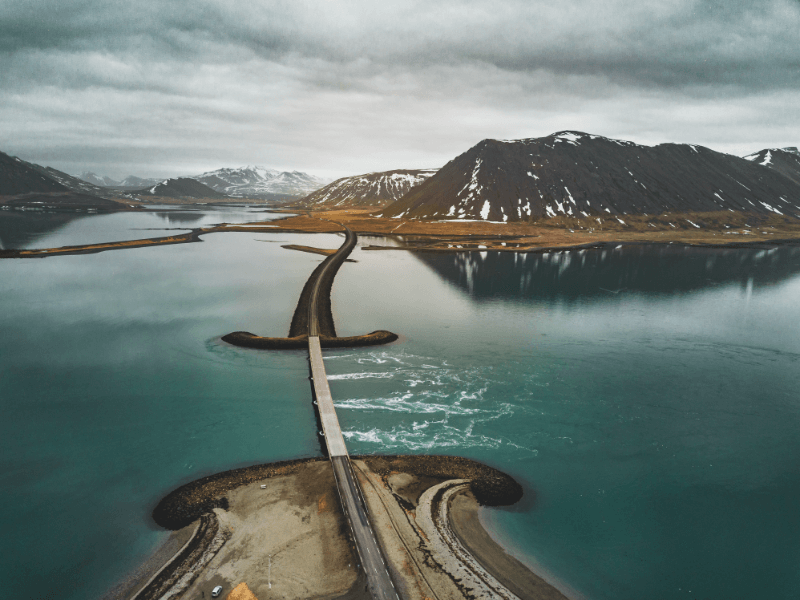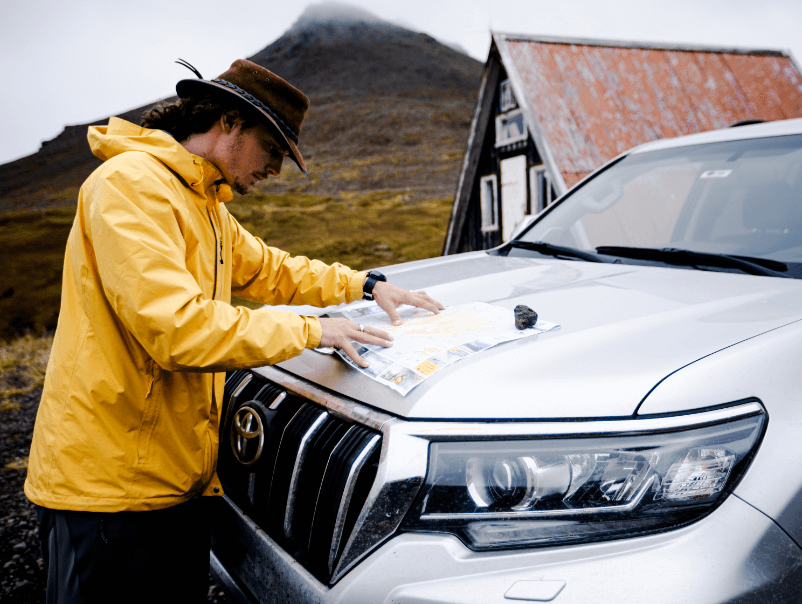If you’ve ever tried to transform your home into a zero waste space, you know how tricky and complicated it can be. In this day and age, it would probably amount to a full-time job and amass a good deal of outsider costs. So, rather than aiming for strict Zero waste camping in Iceland, let's go for a well-intentioned low waste goal instead.
Traveling in Iceland is all about spending time in the country’s incredible natural environment. Therefore, it goes without saying that when we visit, we must do our best to protect and preserve this precious defining quality. Caring for the environment and being eco-conscious, responsible visitors is a prerequisite for anyone planning an Icelandic venture.
There are so many small changes that we can make to move towards a greener existence, both at home and when we’re on our vacations. This means that going on holiday should never be synonymous with taking a break from our environmental responsibilities! So, let’s take a closer look at how exactly we can achieve this with success.
Zero waste camping trip to Iceland
Here is our guide to planning your (almost) zero waste camping trip to Iceland. Complete with both tips and ideas on what to bring with you and how to save on waste while you are here. We will be covering the following:
- Zero waste camping food tips and tricks
- Low waste shopping ideas
- Packing for your low waste camping trip
Get your eco-friendly grub on: camping food, zero waste style
If you are hiring a camper van or a motorhome in Iceland, then you’ll likely be cooking for your group. This activity has the potential to create a significant amount of waste, especially since today’s supermarkets are filled with single-use plastic packaging. Although many are trying to reduce their use, it is true that plastics carry an undeniable factor of convenience with them.
This is especially true when it comes to convenient foods like crisps, chocolate bars and ready-to-eat meals that all come wrapped in plastics. There may be no getting away from the amount of plastic packaging, but there are certainly a handful of ways to minimize your trash can levels. Read on to discover some of them and camp in Iceland like a pro!
. 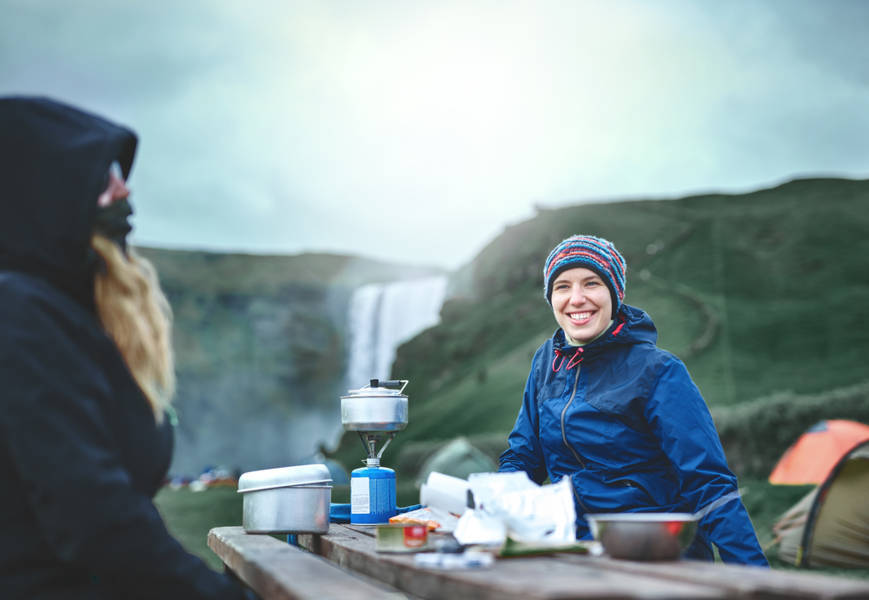
Cooking from scratch
Everyone loves convenient foods and so there’s no doubt that packet snacks have their place. However, trading in these little plastic bags for a fun night of cooking from scratch is the best policy to minimize unnecessary packaging. The best part? It doesn’t have to be complicated! Simple meals are often the most delicious, especially if you’re good and hungry in the great outdoors.
Here’s an example idea for a low waste meal that’s ideal for breakfast, lunch or dinner: fry up some potatoes, scramble a big pan of eggs and add some tomatoes and seasoning to the mix. Just like that, you have a quick, tasty, filling, low cost and low waste meal for your whole crew!
Oftentimes, just tweaking your meal plans a little can make all the difference. You don’t always need to have cereal and yogurt for breakfast, so get creative and shake things up a bit in your outdoor ‘kitchen’. Not only will your stomach thank you, but you’ll be learning how to cook environmentally sustainable, crowd-pleasing feasts in the process.
At the supermarket
When you do head to the supermarket, consider carefully what you need before buying it. Instead of walking the aisles empty-minded in search of inspiration, write a shopping list first. Plan out your meals and only purchase what is truly required.
Choose products with low air miles and ideally, locally produced fruit and veg. Surprisingly, Iceland grows a lot of its own tomatoes, cucumbers and peppers in geothermally heated glasshouses so finding quality produce won’t be an issue. In fact, there are even Icelandic bananas!
For every product on your list, be sure to check use-by dates and consider how much fridge and storage space you have. Where you can, go minimal. If you won’t get around to using something up before the end of your trip, then consider a smaller pack or another option altogether.
Whenever possible, opt for whole vegetables and fruit over anything pre-prepared. If you do need bags, trade plastic for paper. Ready-made, plastic sealed sandwiches create a lot of waste, so instead aim to make your own. With simple ingredients like sliced bread, a block of cheese and some fresh tomatoes you can quickly and easily make a whole stack.
It goes without saying that you should either bring or buy your own reusable shopping bags. These could be useful cloth bags or your own travel rucksacks emptied out. If you do end up with a plastic bag or two, make sure that you put them to good use.
Admittedly, plastic bags are pretty handy on a camping trip. They can be used to sort waste into different groups to take to recycling points. Alternatively, they can be used for gathering, washing or storing dirty hiking boots.s.
Coffee and other drinks
If you’re a caffeine fiend, then a wake-up cup of Joe in the morning is going to be important. Rather than buying takeaway cups from cafés, opt for brewing your own instead. The ritual in itself is worth the extra time and attention.
This is where Reykjavik’s camping gear rental shops come in handy. Fortunately, coffee percolators are one of the items they regularly rent out, so that hints that there are quite a few coffee lovers out there! 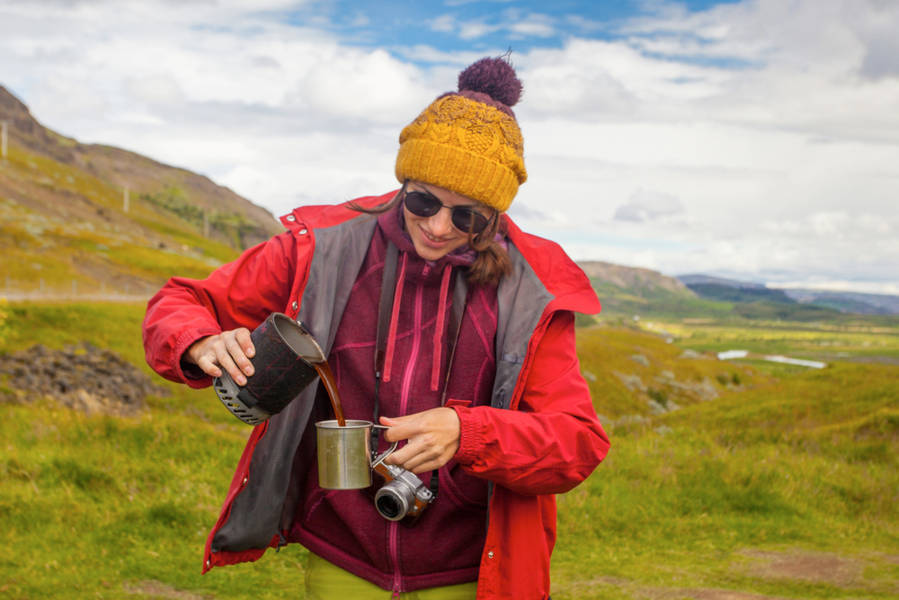 Coffee may get you up and running at the break of day, but it’s the consistent consumption of water that will give you the ability to keep exploring all day long. Especially on an active camping trip, when you’ll likely be off hiking and sightseeing much of the time, hydration is key. Rather than buying bottled water and other soft drinks, opt for tap water instead.
Coffee may get you up and running at the break of day, but it’s the consistent consumption of water that will give you the ability to keep exploring all day long. Especially on an active camping trip, when you’ll likely be off hiking and sightseeing much of the time, hydration is key. Rather than buying bottled water and other soft drinks, opt for tap water instead.
In some places this might be undesirable or even unsafe, but because Iceland’s tap water is some of the purest drinking water in the world, you would actually be missing out if you didn’t try it. Bring refillable water bottles for your whole group and keep topped up on pure Icelandic H2O from sun up ‘till sun down.
Packing for your (almost) zero waste camping trip in Iceland
Kitchen items to take with you
Refillable water bottles and lunch boxes are two essential items to bring with you. You might also like to bring some extra Tupperware or something similar for storing food in. A penknife with a bottle opener and can opener is also useful. Scissors, knives and nail file attachments all come in handy too.
If you are hiring a motorhome or a campervan with us, it will come with a basic camping kitchen kit. Just tell us how many people are in your group and we will cover the tableware and cutlery. As mentioned, Reykjavík’s gear shops often hire out extra items for a small fee.
Be sure to bring a few of your favorite ingredients with you since cooking is bound to be a part of your travel plan at some point. Salt, pepper and your favorite dried herbs and spices are essential to jazzing up any regular meal. So, rather than buying whole containers of them in Iceland that you won’t finish, pack yourself a camping chef's kit.
Other essentials for your backpack
When it comes to camping and roaming in the wilds of Iceland, you are going to need a good kit. As a general rule, it is always wise to buy the highest-quality one you can find, that way you won’t need to replace it again later and ditch the broken version. However, only go all out if this is an item that you will be using quite regularly.
Otherwise, opting to hire or borrow certain items for your trip is a good option. If there’s something you know you’ll need, then check with friends and family first. You can also take a quick browse of one of Reykjavík’s gear shops online and see if you can hire it there instead of lugging it all the way from home. Buying second-hand is also a good way to go.
Coming well prepared with everything you need means that you won’t need to buy again in Iceland. So, take the extra time to write a full packing list and review it methodically. At the end of the day, preparation is the name of the traveling game! 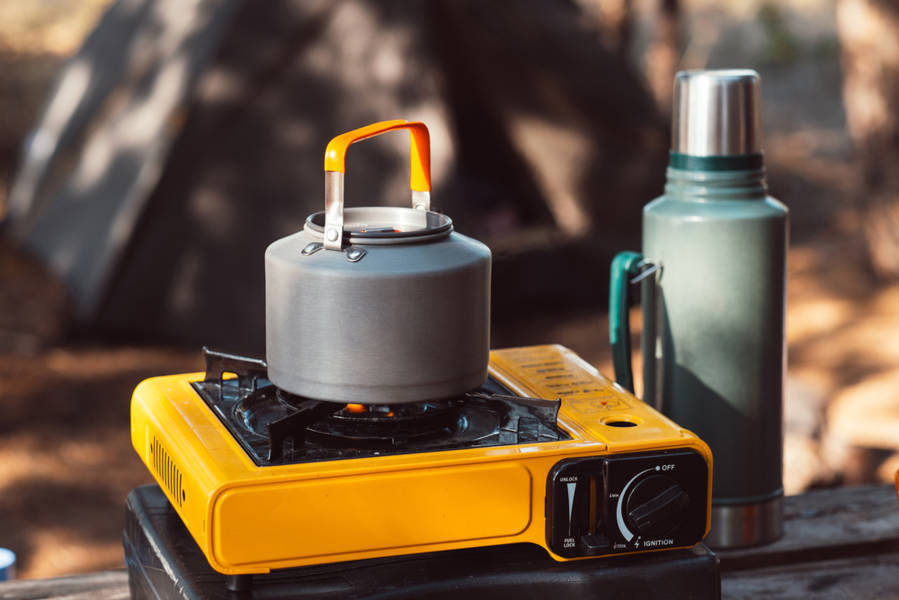
Clearing your camp
When it is time to move on from your campsite or picnic spot, you must always leave the place as you found it. This is the time to sort through your trash and recycling and either take it with you or find the appropriate bin.
If you have stopped for a picnic on a hike, never leave any food waste behind. You might think that an apple core or a banana skin is biodegradable, but they can take several years to break down, especially in the colder climates of Iceland. Instead, pack them up and take them with you, leaving Iceland’s nature in the exact way that you stumbled upon it for the next person to enjoy.
Camping in Iceland
Making conscious choices will certainly help reduce your environmental footprint and will get you closer to the ultimate goal of zero-waste camping in Iceland. Driving a campervan can also be a greener way of traveling if done the right way. So, rent your cheap camper today and check this related article to get more ideas on how to be environmentally responsible in Iceland!



 By
By 





